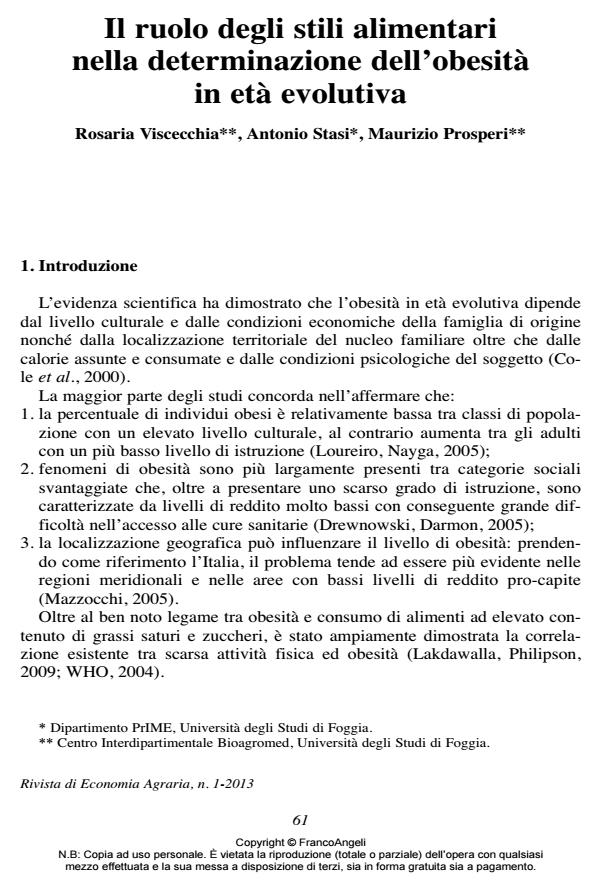Il ruolo degli stili alimentari nella determinazione dell’obesità in età evolutiva
Titolo Rivista RIVISTA DI ECONOMIA AGRARIA
Autori/Curatori Rosaria Viscecchia, Antonio Stasi, Mauizio Prosperi
Anno di pubblicazione 2013 Fascicolo 2013/1
Lingua Italiano Numero pagine 16 P. 61-76 Dimensione file 373 KB
DOI 10.3280/REA2013-001004
Il DOI è il codice a barre della proprietà intellettuale: per saperne di più
clicca qui
Qui sotto puoi vedere in anteprima la prima pagina di questo articolo.
Se questo articolo ti interessa, lo puoi acquistare (e scaricare in formato pdf) seguendo le facili indicazioni per acquistare il download credit. Acquista Download Credits per scaricare questo Articolo in formato PDF

FrancoAngeli è membro della Publishers International Linking Association, Inc (PILA)associazione indipendente e non profit per facilitare (attraverso i servizi tecnologici implementati da CrossRef.org) l’accesso degli studiosi ai contenuti digitali nelle pubblicazioni professionali e scientifiche
Obesity is one of Europe’s most serious public health challenges. The prevalence of obesity and overweight is reaching considerable levels especially in the South of Italy. There is a large body of literature about the determinants of obesity and political tools for its prevention and reduction. This paper aims to analyse the obesity phenomenon through the study of teenagers’ eating habits. Unhealthy lifestyles, in particular alcohol, snack and junk food are investigated. The study is based on a case study referred to a population of 900 students (age 11-19) in the city of Foggia. Results of cluster analysis show three segments Sedentary people (47%), Dynamic people (26%) and Moderate people (27%); results of regression show that BMI increases in each cluster for different causes and the effect of the same food product is different for the three segments. These results suggest that an integrated approach of marketing and public health may have a positive impact on the prevention of obesity and overweight.
Parole chiave:Obesità, abitudini alimentari, età evolutiva, cluster
Jel codes:I18, Q18
Rosaria Viscecchia, Antonio Stasi, Mauizio Prosperi, Il ruolo degli stili alimentari nella determinazione dell’obesità in età evolutiva in "RIVISTA DI ECONOMIA AGRARIA" 1/2013, pp 61-76, DOI: 10.3280/REA2013-001004